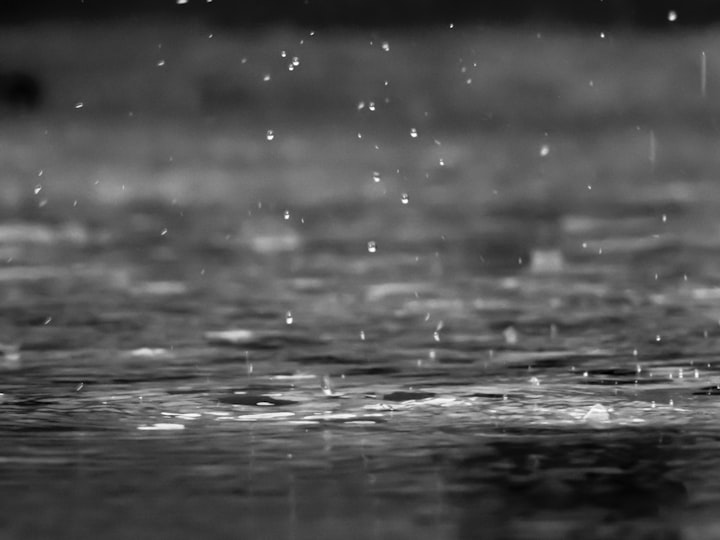The Wonders and Woes of Rain: Understanding This Natural Phenomenon
Exploring the Many Benefits and Risks of Rain, from Agriculture to Climate Change

Rain is a natural phenomenon that has fascinated people for centuries. From its calming effect on the human psyche to its role in agriculture and the water cycle, rain has many benefits that make it a vital component of our planet's ecosystem. However, rain can also have negative effects, from flooding and landslides to transportation disruptions and climate change. In this blog, we will explore the many wonders and woes of rain, and discuss how this natural phenomenon impacts our lives.
Benefits of Rain
One of the most important benefits of rain is its role in agriculture. Rain provides the necessary moisture for crops to grow, ensuring that people have enough food to eat. In areas where rainfall is low, such as arid regions or during droughts, farmers must rely on irrigation to water their crops. This can be costly and require a significant amount of energy, making rain a more efficient and sustainable option.
Rain also helps to replenish water sources such as rivers, lakes, and groundwater reservoirs. This is important for the survival of plants and animals that rely on these water sources, as well as for human consumption. In areas where water is scarce, such as some parts of Africa, rain can be a lifesaver, providing much-needed hydration for people and animals.
Another benefit of rain is its ability to clean the air of pollutants. Raindrops can capture pollutants such as dust, pollen, and other particles in the air, bringing them to the ground and making the air cleaner and more breathable. This is especially important in urban areas, where air pollution can be a major health concern.
Rain also has a calming effect on people. The sound of rain can be soothing and relaxing, helping people to destress and unwind. This is why many people find it easier to sleep during a rainstorm or use recordings of rain sounds to help them relax.
Risks of Rain
While rain has many benefits, it can also have negative effects. One of the most significant risks of rain is flooding. Heavy rainfall can cause rivers to overflow their banks, leading to significant damage to homes, businesses, and infrastructure. In some cases, flooding can even result in loss of life. This is why it is important for people who live in flood-prone areas to be prepared and have emergency plans in place.
Another risk of rain is landslides. Heavy rainfall can destabilize soil, causing it to slide down hills and mountainsides. This can be especially dangerous in areas with steep terrain, where landslides can cause significant damage to homes and infrastructure.
Rain can also cause transportation disruptions, making it difficult for people to get around. Heavy rainfall can cause roads to become flooded or washed out, making them impassable. This can be especially problematic in rural areas where there are fewer alternate routes.
Finally, rain is closely linked to climate change. As the Earth's climate continues to warm, some regions may experience more intense rainfall, while others may experience longer periods of drought. This can have far-reaching effects on ecosystems, agriculture, and water availability. It is important for scientists and policymakers to continue to study and understand the effects of climate change on rainfall patterns, and to develop strategies for mitigating its impacts.
Conclusion
In conclusion, rain is a complex and important part of our planet's ecosystem. While it can have both positive and negative effects, it is ultimately a crucial component of the natural world, and one that we must continue to study and understand in order to ensure our own survival and that of the planet as a whole. From its role in agriculture and the water cycle to its ability to clean the air and soothe the human psyche, rain has many wonders that we should appreciate and celebrate. However, we must also be aware of the risks of rain, such as flooding, landslides, transportation disruptions, and climate change, and take steps to mitigate these risks.
One way to mitigate the risks of rain is to improve our infrastructure. This includes building better drainage systems to prevent flooding, stabilizing soil to prevent landslides, and ensuring that roads and bridges can withstand heavy rainfall. Additionally, we can work to reduce our carbon footprint and mitigate the effects of climate change, which will help to ensure that rainfall patterns remain stable and predictable.
Education and awareness are also important tools in mitigating the risks of rain. People who live in flood-prone areas should be educated about emergency preparedness and have access to information about potential risks. Similarly, policymakers should be aware of the potential risks of climate change and take steps to reduce greenhouse gas emissions and adapt to changing rainfall patterns.
In conclusion, rain is a fascinating and vital part of our planet's ecosystem. While it has many benefits, we must also be aware of the risks associated with heavy rainfall, and take steps to mitigate these risks. By working together and taking action to protect our infrastructure, reduce our carbon footprint, and improve our understanding of rainfall patterns, we can ensure that rain continues to play a positive role in our lives and in the natural world.






Comments
There are no comments for this story
Be the first to respond and start the conversation.